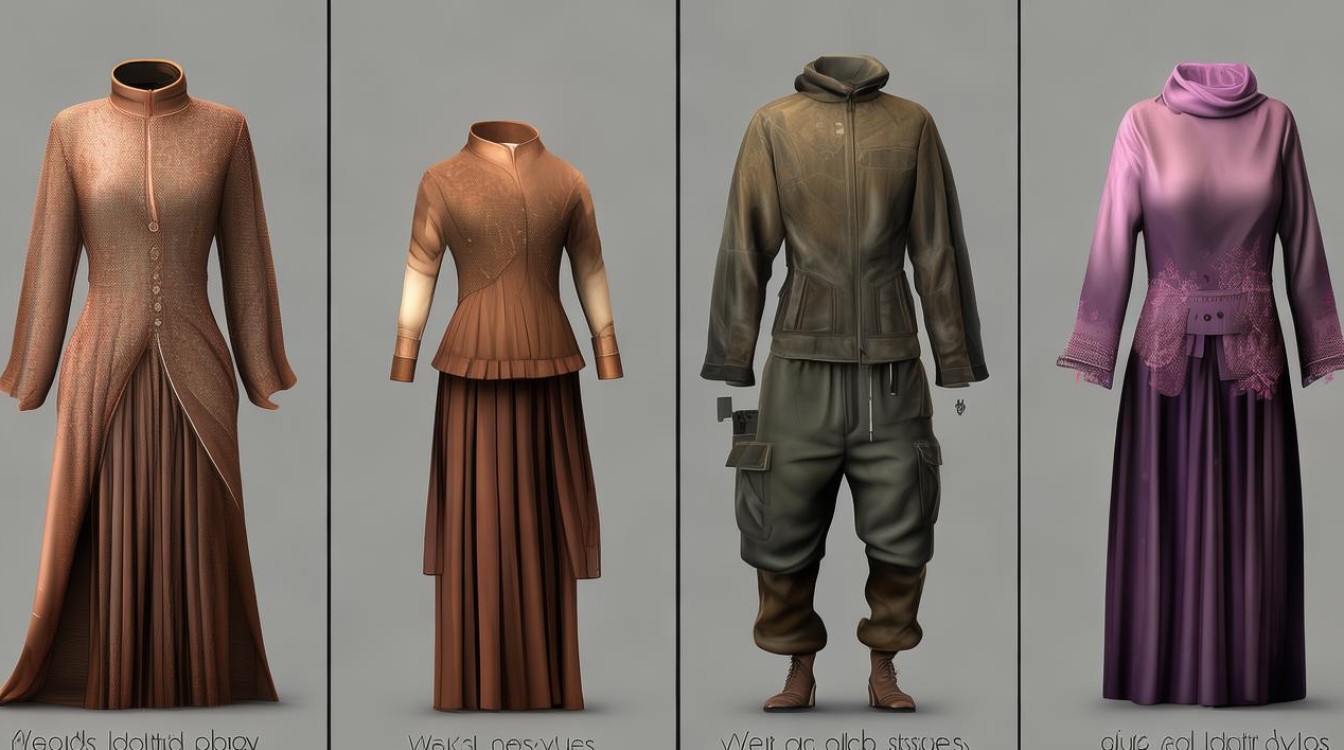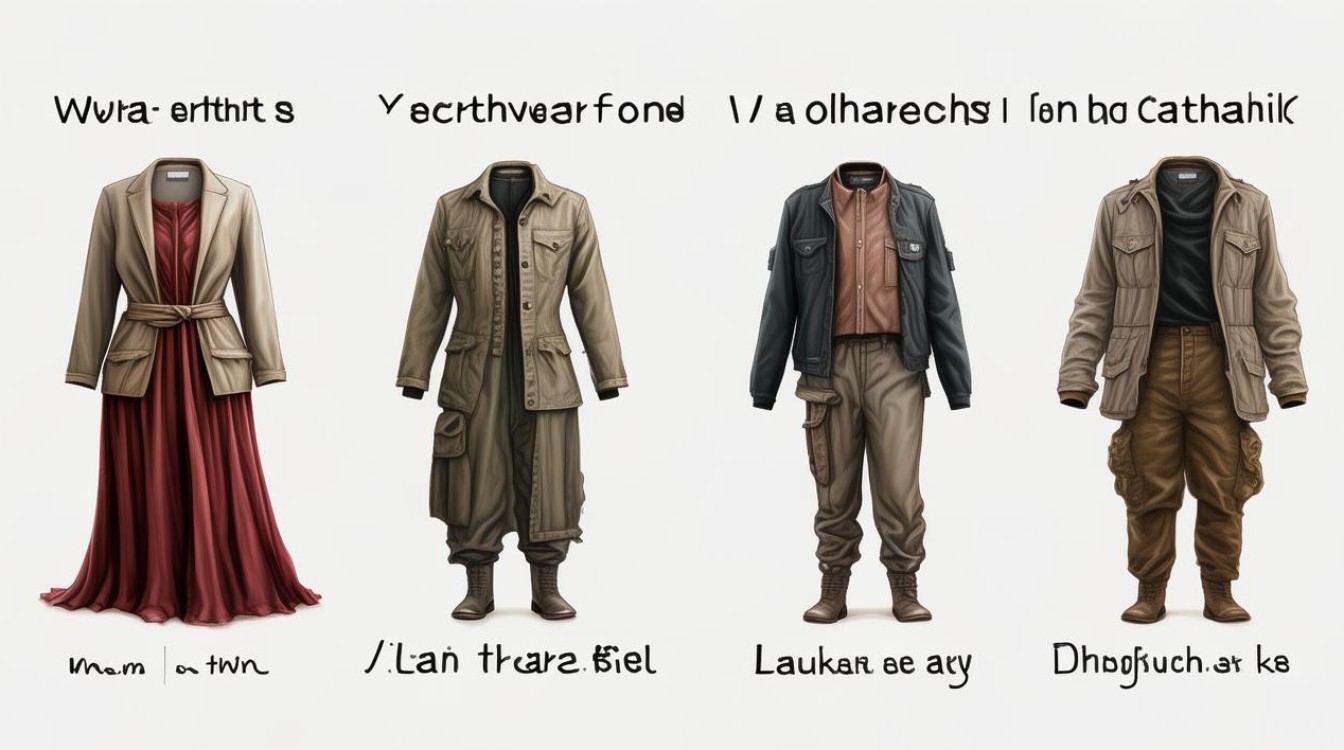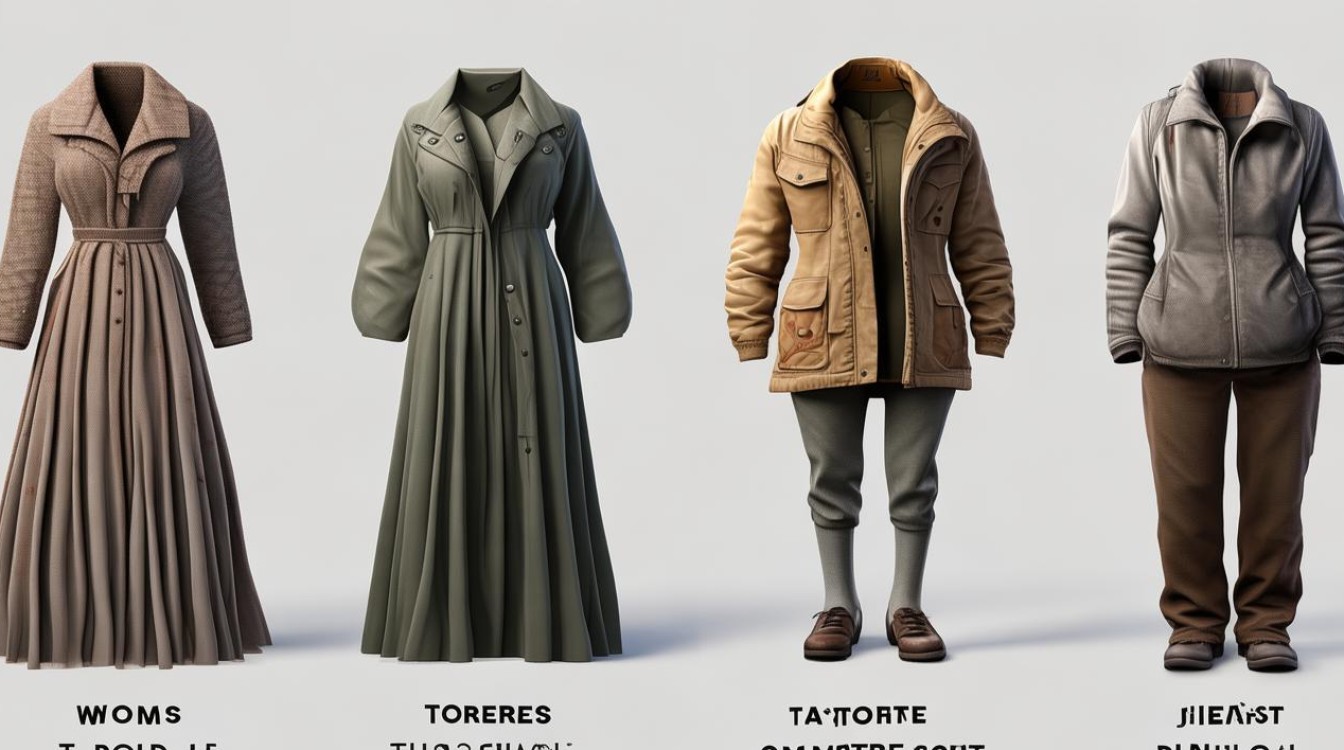在英语中,表示“穿”的动词有很多,但最常用的四个是 wear、put on、dress 和 have on,虽然它们都与“穿衣服”相关,但在使用场景、语法结构和含义上有明显区别,掌握它们的差异,能让英语表达更准确自然。

wear —— 表示“穿着”的状态
wear 是最常用的词,强调“穿在身上”的状态,而不是动作,它通常用于描述某人当前或习惯性的穿着。
例句:
- She wears a red dress to work every Monday. (她每周一都穿红色连衣裙上班。)
- He is wearing sunglasses even though it’s cloudy. (尽管阴天,他还是戴着墨镜。)
特点:
- 可以用于各种衣物、配饰(如帽子、手表、眼镜)。
- 通常用于一般现在时、现在进行时等时态,描述持续状态。
常见搭配:
- wear a suit(穿西装)
- wear makeup(化妆)
- wear perfume(喷香水)
put on —— 表示“穿上”的动作
put on 强调的是“穿”的动作,即“把衣服穿上”的过程,而不是穿着的状态。
例句:
- It’s cold outside; you should put on a coat. (外面很冷,你应该穿上外套。)
- She put on her shoes and left the house. (她穿上鞋子离开了家。)
特点:
- 只能用于“穿”的动作,不能表示持续状态。
- 可以用于衣物、鞋子、首饰等。
常见搭配:

- put on a hat(戴上帽子)
- put on gloves(戴上手套)
- put on weight(增重,非穿衣含义)
dress —— 表示“穿衣”或“打扮”
dress 的用法比前两个更复杂,可以表示“给自己或别人穿衣服”,也可以指“整体的穿着风格”。
(1)dress oneself —— 给自己穿衣服
通常用于描述某人自己穿衣服的动作,尤其适用于小孩或需要帮助的人。
例句:
- The little boy is learning to dress himself. (小男孩正在学自己穿衣服。)
- She dressed quickly and went downstairs. (她迅速穿好衣服下楼了。)
(2)dress (sb.) —— 给别人穿衣服
可以指帮别人穿衣服,比如父母给孩子穿衣,或服装师给演员换装。
例句:
- The nurse dressed the patient in a hospital gown. (护士给病人穿上了病号服。)
- She dressed her daughter in a cute pink dress. (她给女儿穿了一条可爱的粉色裙子。)
(3)dress (in) —— 指穿着风格
dress 也可以表示“穿着某种风格的衣服”,常用于正式场合或特定装扮。
例句:
- He always dresses formally for meetings. (他开会时总是穿得很正式。)
- The guests were dressed in black for the funeral. (宾客们都穿着黑色衣服参加葬礼。)
常见搭配:

- dress up(盛装打扮)
- dress code(着装要求)
- dress casually(穿得休闲)
have on —— 口语化的“穿着”
have on 和 wear 类似,都表示“穿着的状态”,但 have on 更口语化,通常用于日常对话。
例句:
- She has on a beautiful necklace today. (她今天戴了一条漂亮的项链。)
- Do you know what he had on at the party? (你知道他在派对上穿了什么吗?)
特点:
- 不能用于进行时(❌ He is having on a jacket → 错误)。
- 多用于现在时或过去时。
常见搭配:
- have sth. on(穿着某物)
- have nothing on(什么都没穿)
如何正确选择?
-
如果是“穿”的动作 → 用 put on
例:Put on your jacket before going out.(出门前穿上夹克。)
-
如果是“穿着的状态” → 用 wear 或 have on(口语)
- 例:She wears glasses.(她戴眼镜。)
- 例:He has on a cool T-shirt.(他穿了一件很酷的T恤。)
-
如果是“自己或别人穿衣” → 用 dress

例:She dressed her baby in warm clothes.(她给宝宝穿了保暖的衣服。)
-
如果是“整体打扮风格” → 用 dress
例:They dressed casually for the picnic.(他们穿得很休闲去野餐。)
常见错误
❌ I wear my coat and go out. (错误,wear 是状态,不能表示动作)
✅ I put on my coat and go out. (正确,表示“穿上”的动作)
❌ She is having on a dress. (错误,have on 不能用于进行时)
✅ She is wearing a dress. (正确)
❌ He dressed a black suit. (错误,dress 不能直接接衣物)
✅ He dressed in a black suit. (正确,用 in 表示穿着)
英语中“穿”的表达看似简单,但细微差别会影响句子的准确性,多观察母语者的使用习惯,结合不同场景练习,才能真正掌握它们的用法。


